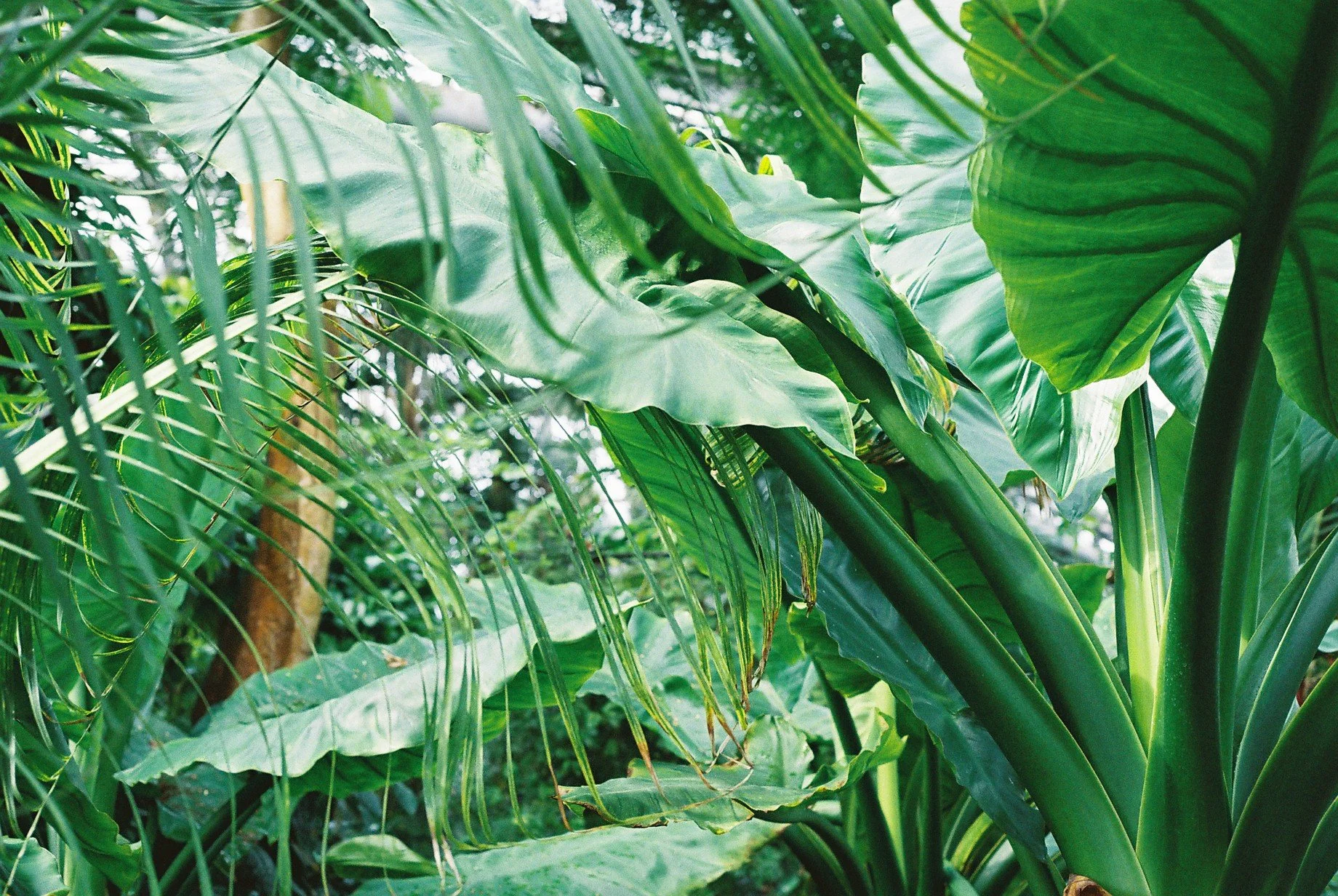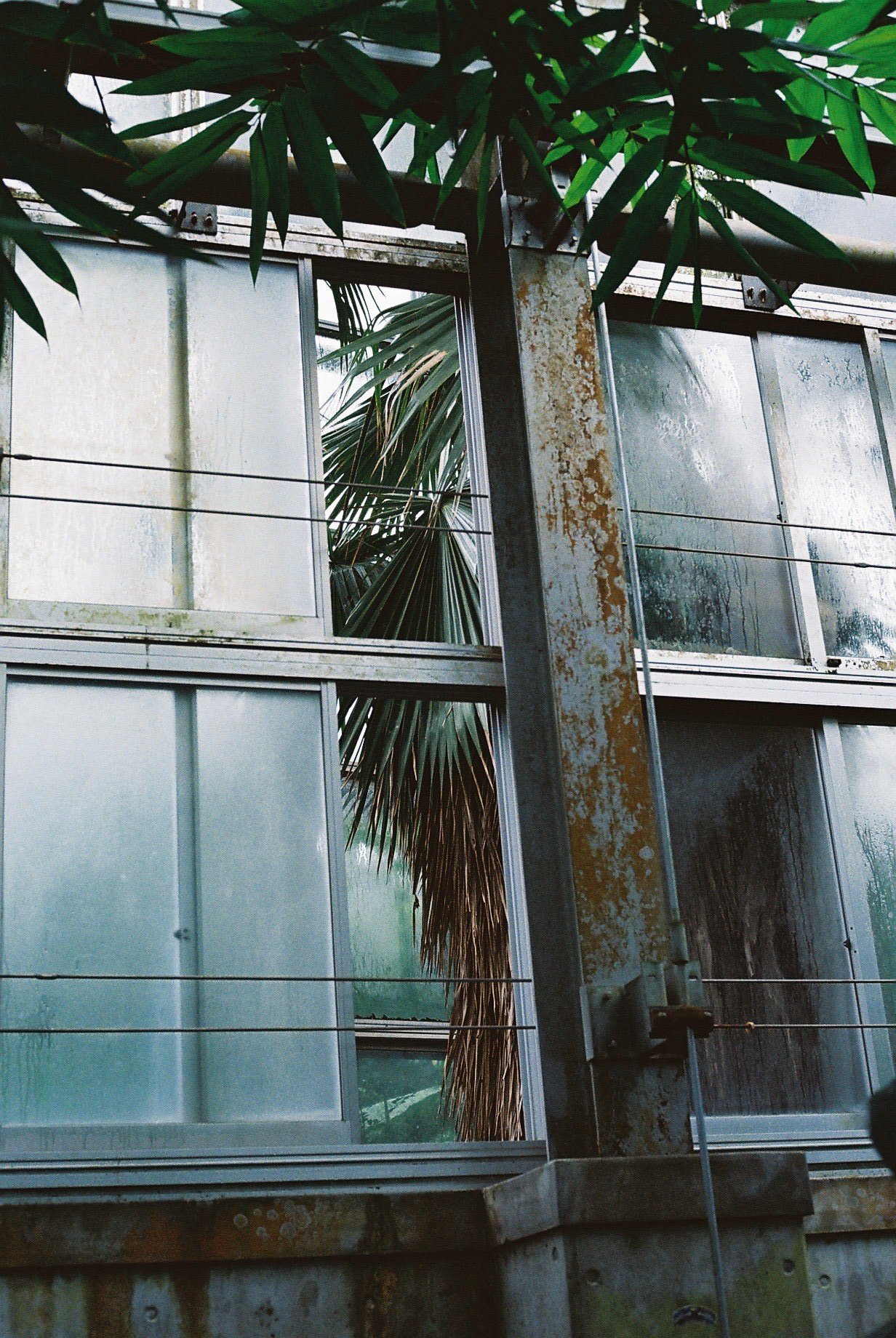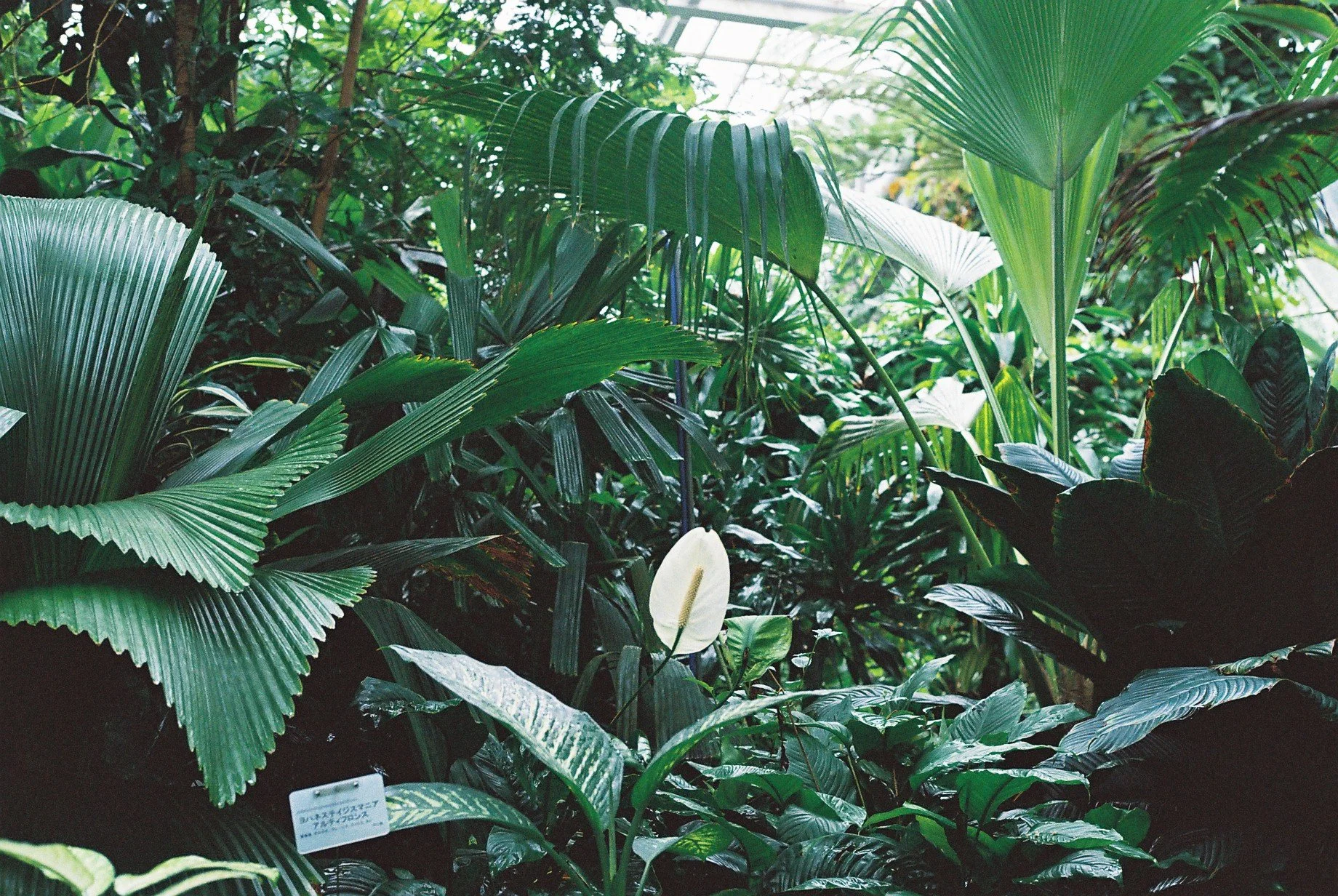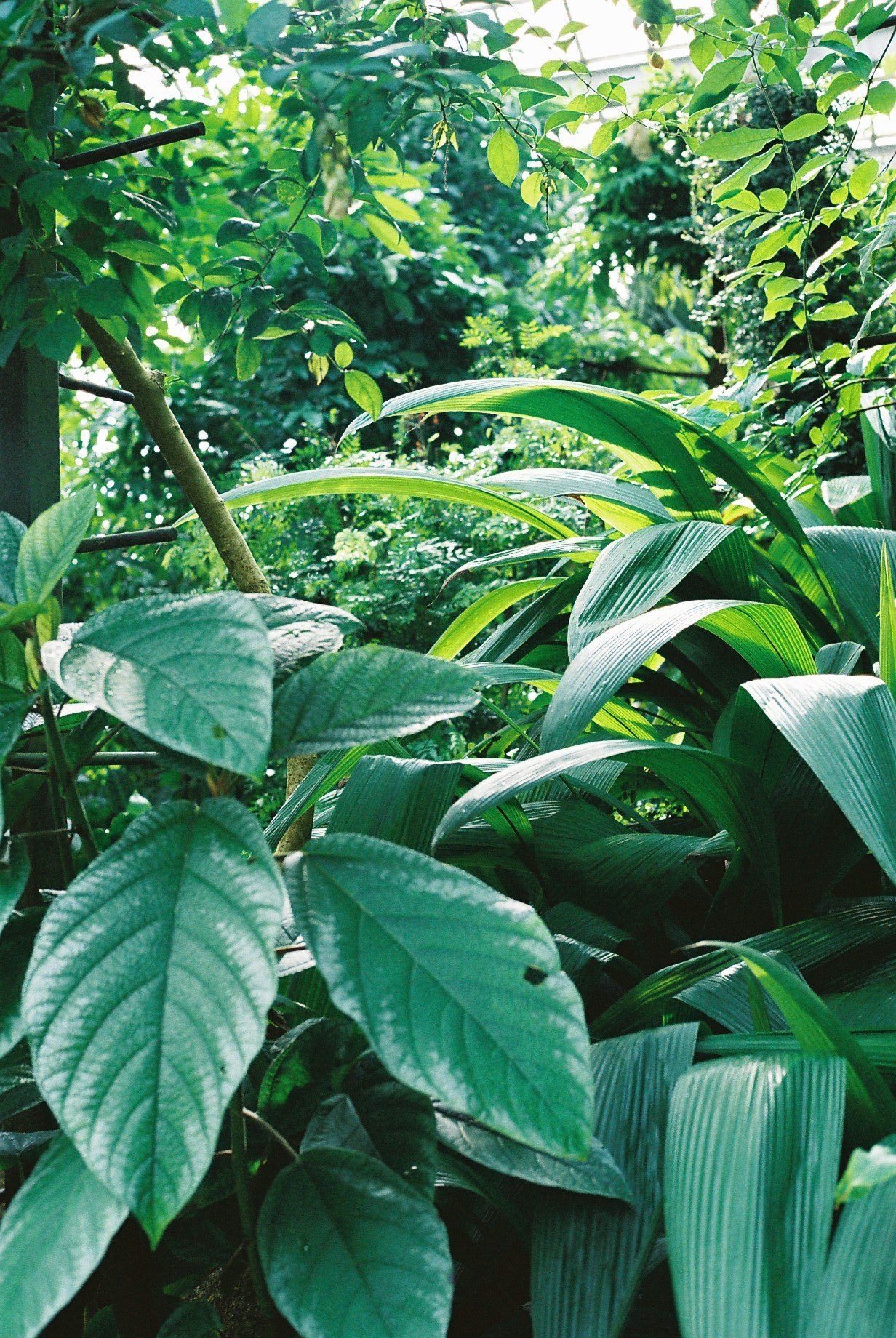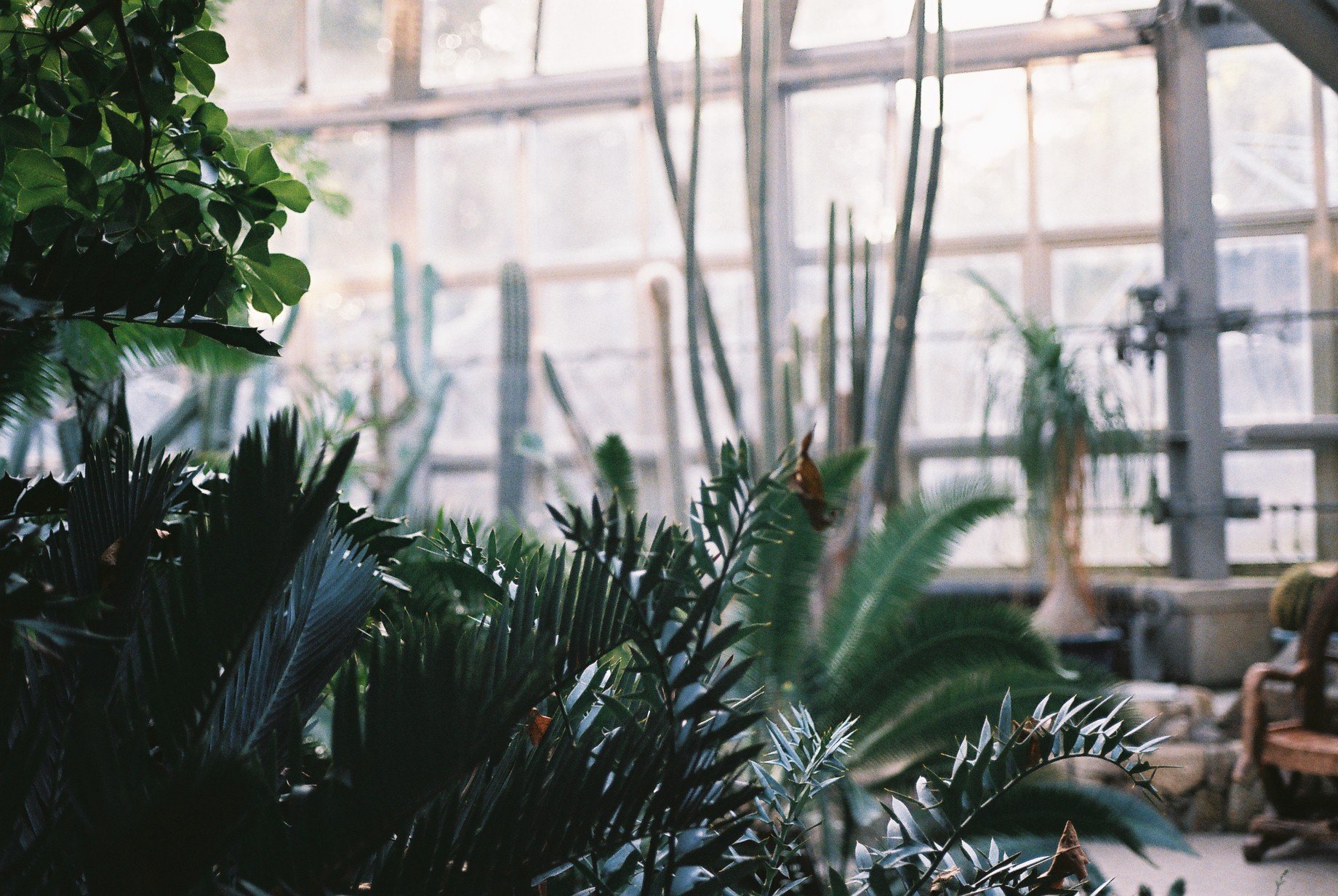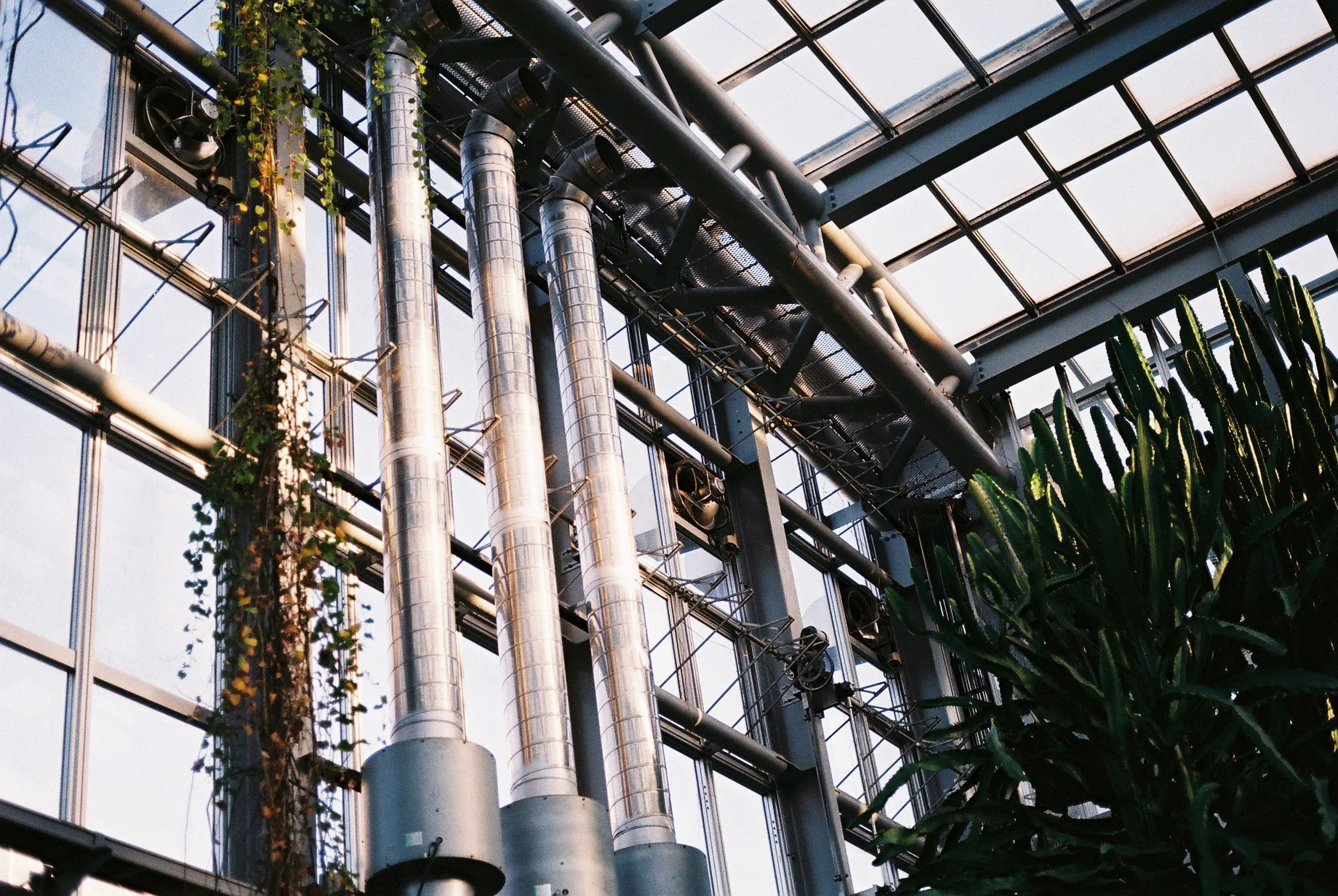
K Y O T O B O T A N I C A L G A R D E N S
It could be argued that the point of a botanical garden is to be among plants that are inherently ‘from elsewhere’ - something done in your hometown when you feel the need to experience the exotic. This is especially true of Britain, where the otherness of tropical plants teamed with the pressure and heat of a botanical glasshouse can create a momentary sense of escape.
Japan is abundant in flora unusual to the senses of Europeans, from sprawling palms in tropical Okinawa to the vertiginous sugi cedars of fresh, chill Hokkaido. No city in Japan is truly far from ‘deep nature’, either. You can ride from Shinjuku in central Tokyo to the mountains of Takao in 50 minutes on the Keio line, for only ¥380.
Why, then, visit a botanical garden in Kyoto, a city so famous for its shrines and temples and historical streets?
My love affair with Kyoto’s botanical gardens began during my first winter in the city. As if tracing the extremes of a pendulum swing, Kyoto’s humid, crushing summers are followed by hard, bitter winters. Snow doesn’t usually fall for more than a day or two within the city; instead, an inescapable greyness is steel-toned and ever-present and, hardened by the stinging slap of dry winds from the north. Walking anywhere outdoors in winter carries a kind of equal and opposite pain to summer, in which every surface of exposed flesh is pinched and bitten by the cold. Lungs falter with the dryness of the air, eyes and nose streaming in sympathy with one another. Being outdoors, essential though it is for a person’s wellbeing, is gruelling.
I had heard of a botanical garden situated somewhere in the residential north region of the city, around the Kitayama station area. Even the name, Kitayama - ‘northern mountain’ - sounded frostbitten. On a rare day off, I wrapped myself in as many layers as I could carry, freezing and sweating in turn while walking to and riding the JR line and the city subway from fashionably modern Tambaguchi to the 1980s time-warp district of Kitayama.
The station has multiple exits, several of which are nowhere near the front gate of the botanical gardens. Through trial and error, I now know that Exit 3 is the only means of accessing the entrance. Entry tickets to the outer gardens and to the central glasshouse are available at the front gates, through comically geriatric automated machines. They are confounding for those who can’t read Japanese, but there’s also a manned ticket booth staffed by humans - equally confounding. Although I was long past struggling to exist in a second language, I found this obliviousness to the needs of inbound tourism an endearing aspect of Kyoto city’s outer wards - a final shred of authenticity in a city which now panders to the demand of The Frictionless Tourist Experience.
The gardens in their entirety easily require a full day to enjoy, but in winter the expansive outdoors spaces are bare, subject to Kyoto’s biting chill as much as any other part of the city. The glasshouse was my objective; I reasoned that it must be at least moderately warm, to support the collection of tropical plants within. The structure was built in 1992, although the funding and planning of the beast itself would have grown directly from the economic abundance of Japan’s bubble economy in the years before. A perfect marriage of softness and structure, the steel and glass bubble provides a modern-industrial contrast to the wilderness it contains.
When the structure was built and the planting first installed, the greenhouse must have looked remarkably manicured. Glittering metal housing glistening plants; all freshly bedded, tidy and well-behaved. Many such similar glasshouses exist in Japan; they are maintained and orderly, kept by diligent staff waged on private money. Kyoto’s botanical glasshouse is different. In the 30 years since its creation, it has become unruly. The plants - shockingly - grew. They grew tall and wild, as plants are apt to do in such artificially perfect conditions.
When I first visited in 2016, after 24 years of well-supported growth, many of the larger specimens were bowed and bending at the upper limits of the glass dome. Some had cracked the panes of glass from the force of their growth alone, while climbers and creepers had knit the cracked surfaces together again in their attempts to weave an escape route. Tropical fruiting plants were now bearing heavy seed with sharp shells, and I was warned of this by signs made on laminated printer paper and tied to tree boughs with string. To me, this was a delightful departure from the usually indemnity-aware municipal spaces of Japan.
This is the essence of the place; I went for the healing warmth and greenery, an escape from hostile winter. What I found was sanctuary on multiple levels. After ascending the artificial hill through the planting that had become a de-facto jungle, I arrived at a wide wooden bench bathed in weak and watery winter sunlight. Already pale, the light took on a gold and purple hue as it shone through the grime of the glass panels and fell upon the rusting metal pipes. I felt as though the entire environment was tinted like Velvia; the romance of memory and the sentiment of a setting sun. It was silent, and empty. No visitors on this winter day, and the musk of the fertile soil and tang of damp, verdant growth belonged solely to me.
Kyoto’s glasshouse is visually analogous to Japan’s post-boom period; a settling of dust on once-grand things that remain unchanged from their golden days. More so than remaining unchanged, they resist change. The grime on the window panes among the vines are also the fax machines used in every office, the neon arcades in downtown Osaka, and of cash paid for nearly everything. It is an atmosphere of retro-futurism in which the future never fully arrived. So much of Japan’s image is built on modernity; bullet trains and electric cities, a robot for everything, clinical cleanliness. But my time in Japan was spent among the settled dust, the darkened corners and the districts that time and ‘progress’ had neglected.
Japan’s shining veneer is ever circled by the promise of decay. A kind of beautiful decay; not something to fear or shun. The suspension in time of entire city districts creates a living museum that can be fully experienced. Yes, there are obvious and ancient attractions; mountaintop temples unchanged for a thousand years. But recent history, too. Kyoto’s Kitayama, with its 1980s hair salon signage. Osaka’s Nishinari-ku, derelict and vibrant in equal measure and described by property developers as ‘resisting redevelopment.’ And Kyoto’s botanical glasshouse, with the same greige utilitarian floor tiles I used to walk on in the rural government schools I worked in when I first arrived in Japan. Tiny metal name-plates attached to plant specimens bearing the no-nonsense typeface of the day. Palms and vines which grew and grew, planted in optimism and now largely left to their own devices as they bloom and rot and bloom again in their yearly cycles. Not like modern and well-turned-out green spaces, where decaying fruits and dead leaves are officiously removed from sight. No; they sour and stink and fall, occasionally onto passing heads, or into borders where they ferment and mulch and feed their neighbours as they would do in any jungle. The natural symbiosis creating a self-sustaining biome.
I love Kyoto’s botanical glasshouse for its solitude, for being unknown and ignored by tourists. For largely feeling like my own private jungle, a warm and deeply healing space that winter cannot penetrate. It is enormous, labyrinthine; with domes and rooms for tropics, more tropics, arids, alpines, temperate and even entirely nocturnal plants. There is a desert zone with a ‘western vista’ painted on the rear walls, delightfully oblivious to its own kitsch, squeezing every drop out of the aesthetic construct of ‘cactus.’ I love it for the green growth, the sense that the plants are now in charge. And for the rot, the decay, the grime; the full cycle of life away from officious, sanitising hands. For the sense that the place exists on the margins of abandonment, that the climbers and creepers are quietly planning their coup.
On days where the natural world is too punishing for the dedications of outdoor worship, I would be here. If the Christians have their churches, the Buddhists their temples and the Consumers their shopping malls, I have Kyoto’s botanical glasshouse.
